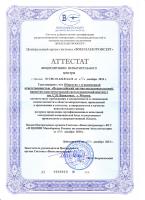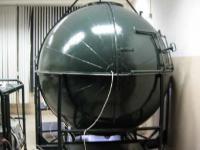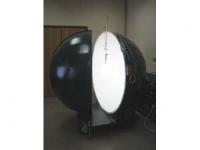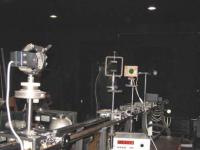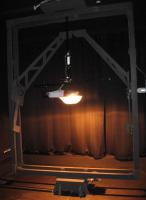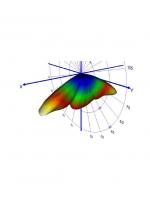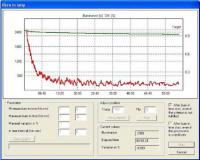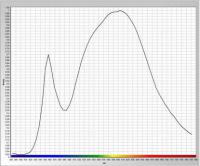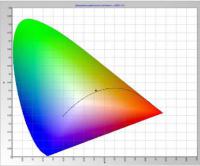Photometric measurements
VNISI Testing Center
Starting with its foundation in 1951, VNISI has been conducting measurements and testing for civil and special purpose of lighting engineering and electro technical equipment in various fields, including photometric and colorimetric measurements, lighting engineering metrology, tests on firmness and durability of products to influence of external climatic and mechanical factors. Currently the structure of the Testing Centre includes a spectroradiometric and photometric laboratory, a testing and control station and the office for metrology and standardization.
VNISI’s testing operations centre possesses an up-to-date photometric equipment, various test benches, climatic and mechanical test chambers. The centre was standardized in the "Voenelektronsert" system for facultative certification of the electronics equipment, electronic and radio components, and defense materials. The centre conducts measurements and tests of illumination devices and light sources for civil and special purposes VNISI Testing Centre equipment, which is employed for tests and measurements, undergoes annual calibration at the Federal State Institution “ROSTEST” and the Russian National Research Institute for Optical and Physical Measurements (VNIIOFI). The Testing Centre team consists of highly qualified specialists that have a degree in lighting engineering and specialize in the field of photometry, light sources and illumination engineering design.
- The list of services of VNISI Testing Center
- The list of climatic and mechanic tests
- To make order of photometric measurements and testings of lighting device or light sours you should send us fulfilled application for lighting test by fax +7 (495) 788-32-96 or e-mail
This e-mail address is being protected from spambots. You need JavaScript enabled to view it
.
If you have any questions please don’t hesitate to contact our specialists by phone +7 (495) 682-17-01.
Photometric and Colorimetric Measurements
Spectrophotometric laboratory of the VNISI testing operations centre utilizes various types of measuring equipment, that allows conducting a wide range of photometric and colorimetric measurements:
- Spherical photometric integrators with diameters ranging from 0.5 to 2 meters
- Photometric benches
- 3 types of goniophotometers
- Standard lamps to measure luminous intensity (SIS type) and luminous flux (SIP type)
- Stabilized sources for AC and DC voltage
- Spectral colorimeter
- Illuminance meters, UV-radiometer
- Pulsemeter
- Digital and analogous active power meters, amperemeter
- Multimeters and other devices and accessories
Precision-Guided Photometric Measurements for Luminaires
In addition to “traditional” goniophotometers the VNISI testing centre possesses an automatic RIGO-801 goniophotometer produced by the Techno Team (Germany) that makes it possible to perform a body of high-precision photometric measurements at a totally new level. RIGO-801 goniophotometer is designed for precise photometric measurements of the luminous flux, photometric body, luminous intensity distribution curves for the luminaires up to 1.8 meters in size in an unattended operation mode.
The operational principle for this goniophotometer is based upon the near-field photometry that is measuring the spatial luminance distributions of lamps and luminaires. These measurements are performed by a special CCD camera and an electromechanical scanning system that makes it possible to move a camera around the luminaire along horizontal and vertical axes with an angular increment (between the C-layers and the radiation angles) ranging from 2.5° (standard value) to 0.1°. The measurement process is computer-aided and operated by special software.
An important feature of the measurements taken by this goniophotometer is an opportunity to receive measurement data from a luminaire fixed in an operating position. This minimizes errors that are greater with several other types of goniophotometers measuring a rotating light source. A rotating light source often causes an inconsistent reading of photometric characteristics because of the changes in the thermal regime of the luminaire or the light source under measurement.
Luminaire photometric body measured by the high-precision RIGO-801 goniophotometer could be represented as luminous intensity distribution curves in coordinate planes C, y and as a computer file in the IES format, that is widely used in computer-aided design and dimensioning various light installations.
Spectral Colorimetric Measurements
The specialists of the testing centre are measuring emission spectra in the visible region of spectrum from 380-780 nm, chromaticity coordinates, and emission chromaticity, color temperature and color rendering index of the luminaires and light sources utilizing a modern spectra colorimeter.
In the process of photometric and colorimetric measurements electrical parameters of the luminaire or the light source are controlled and recorded. These parameters include: AC or DC power-supply voltage, electric current and power consumed by a luminaire and power factor. When necessary the testing operations could be processed under nonstandard operating conditions of a luminaire. For example, that might be an overvoltage or an undervoltage, high or low temperatures and humidity. These measurements are mostly performed by the testing and control station, that is a part of VNISI’s testing operations centre.
The Testing and Control Station
The Testing and control station (TCS) provides methods and tools to test external mechanical and climatic impact resistance of the devices, including the testing of dustproof and damp-proof capacities, vibration and shock resistance testing devices for high and low temperature conditions. Special equipment makes it possible to perform testing of electrical parameters, such as insulation strength and insulation resistance, and the ingress protection (IP) rating of the test objects.
The mechanical and climatic units of the testing and control station are equipped with authorized and calibrated instrumentation, such as vibration and shock testing machines, climatic test chambers for heat, cold and moisture, precipitation conditions chamber, dustproof insulation testing chamber, water immersion testing container and others.
Control and measuring equipment, power supply sources and other auxiliary equipment regularly undergoes calibration by the certified state institutions. The equipment is attended by the qualified and annually attested personnel.
The testing and control station performs testing operations for the lighting equipment of wide applicability. The workload for the station mostly consists of commissioning trials, type tests, periodical tests for special-purpose off-the-shelf equipment, produced under orders from the Rocket and Space corporation “ENERGIA” and the Ministry of Defense. This special purpose equipment includes lighting fixtures for external and internal lighting of the International Space Station, the manned rocket and space complexes and other objects. Preliminary trials and research testing that are associated with supporting development and engineering projects, introducing new technology for the national economy occupy a salient position in the total volume of testing.
If necessary the testing is performed in presence and under control of the Quality Control Department representatives and under the representative agency of the contractor (military acceptance). The classification of test objects for the testing and control station is not limited to illumination devices. The testing station equipment is cross-functional and enables testing for devices of a varied functional profile.
The data received during testing is enlisted in the test record sheets, that are the fundamental documents issued by the spectroradiometric and photometric laboratory and the testing and control station of VNISI’s testing centre.




